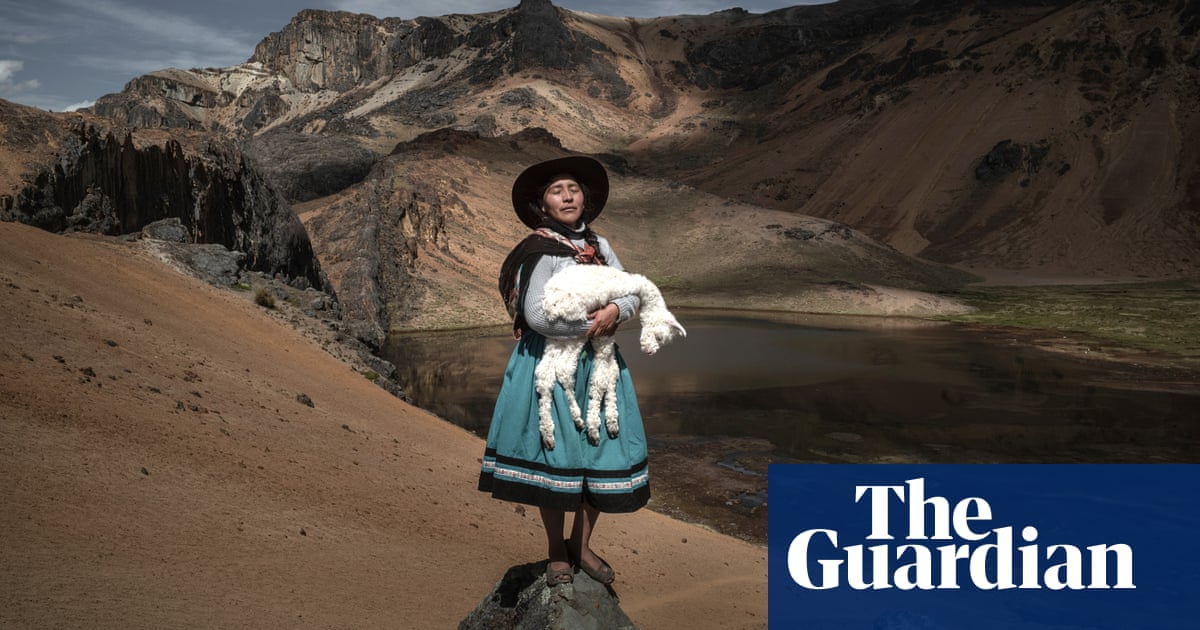
However, this production is now under threat: the climate crisis has visibly transformed the region’s high-altitude pastures, with adverse weather events such as frosts and snowstorms, becoming more frequent and unpredictable.
La Niña has also intensified periods of drought. The last one began with extreme temperatures in districts such as Ocongate, in the Cusco region, in 2022 and lasted for months, the driest season recorded in 58 years.
The same happened in the Puno, Cusco, Arequipa, Huancavelica, Apurímac and Ayacucho regions, affecting the quality of the pastures and the availability of water, and in turn the quality of the alpaca’s fleece, as well as their survival.
Alpacas have a prolonged incubation – 335 days – and have only one offspring a year, and herds are small. So, every animal death significantly affects the livelihoods of the 80,000 mainly low-income families who breed alpacas in the region. Breeders like Alina Surquislla Gomez, whose family has a herd of 300 alpacas following a tradition of three generations, are now facing a drop in income.
For others, moving closer to large urban areas is the only solution. As alpaca breeders live alongside water sources, they are considered by environmental defenders as caretakers of the springs that provide water for the country’s cities.
“The current situation of the alpaca herders has been critical since last year, mainly due to … climate change and because of the drought,” says Milagros Aguilar Calla, a veterinarian and vice-president of the Centre for Studies and Promotion of Development of the South (Descosur).
“Since last year, an extreme drought has been increasing offspring mortality and miscarriages. Breeders are selling their animals at meagre prices because there is no pasture, and the weather conditions are unfavourable,” she says.
Prices paid by the manufacturing industry for 1kg of alpaca fibre have also fallen. According to a report by Allied Market Research, the global market for alpaca fibre was worth £694m in 2021 and was expected to reach £980m by 2031. About 70% of the world’s alpacas live in Peru; most of the rest are in neighbouring Bolivia and Australia. In Peru alone, the fibre generates about £150m annually.
The problem, critics say, is that although the fibre can have high added value, breeders don’t benefit from it. “In our studies, the cost of producing 1kg of alpaca is roughly 22 soles (£4.77). However, buyers set the price in the market; this year, for example, it was 11 or 12 soles (£2.60). In times of higher demand, it goes up to 15,” says Aguilar Calla.
Companies that buy alpaca fibre in the region agree that the climate crisis is severely affecting breeders. But they say the primary solution to breeders’ low income is to increase productivity per hectare.
“Climate change and the greenhouse effect are causing problems in the Andes, where the alpacas live. Adverse weather events, such as frosts and snowfalls, are occurring unusually and more frequently when they were not common,” says Daniel Aréstegui, manager of the International Alpaca Association (AIA), a Peruvian association representing 65 companies worldwide.
“The price of alpaca [fibre] has been cyclical for the last 30 years because there is not enough product on the market,” he adds. “We need more alpaca fibre. The market is ready for more. The problem is scarcity.”
According to Aréstegui, the low income of alpaca breeders in Peru is a result of agrarian reform in the 1960s and 1970s. “Production became atomised. Before the agrarian reform, some breeders were landowners and had 10,000, 20,000, or 50,000 alpacas. Since the reform, they have herds of 400, 500 alpacas,” he says.
“Today, the average is roughly 100 alpacas a breeder, which is limited by the land sizes. The agrarian reform of the 1970s in Peru was perverse and harmful.”
Experts who work with local breeders, including Aguilar Calla, say industrial groups that dominate the export of alpaca products also squeeze the prices and are at least partly responsible for breeders’ low income.
Researchers and local associations stress that the future of the alpaca sector requires equitable and sustainable restructuring by the government. The Peruvian government has introduced aid programmes, but they have been insufficient, says Aguilar Calla.
“In the high Andes, state presence is minimal. There are no incentives to add value and improve the breeders’ quality of life,” Aguilar Calla says. “If nothing changes, the future of alpaca production is critical.”












